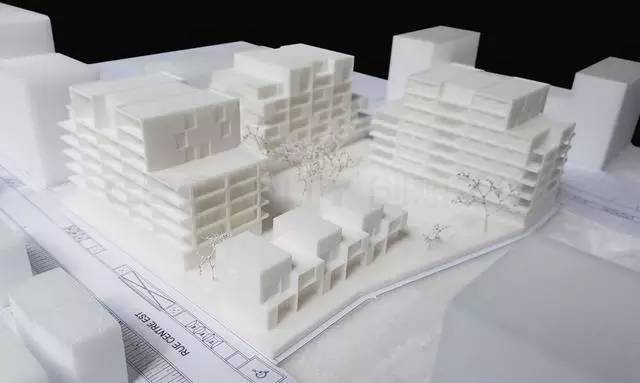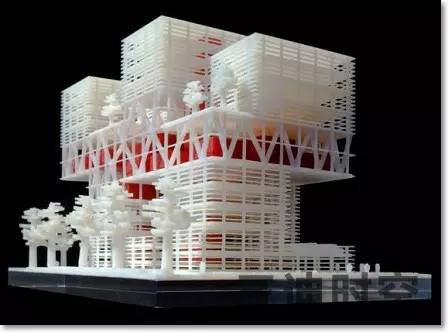Have you seen 3D movies and have you heard of 3D printing technology? The ordinary printers in our lives print out flat graphics, 3D printing adds one more dimension than this, but works on roughly the same principle, just with different materials. Nowadays, 3D printing technology has actually been used in industrial fields such as aerospace and automotive manufacturing, with great potential for development.

Recently, 3D printing technology has begun to seek opportunities in the construction industry. in 2018, China's domestic construction output reached 23 trillion yuan, which is a promising market excluding aspects that 3D printing technology cannot reach.
3D printing applied to the construction industry is technically based on the more traditional FMD-like model, where material delivery, grasping solidification time and mixing multiple materials are the technical keys. The current mainstream construction 3D printing technology is divided into three categories, one is the use of special synthetic materials to enhance the hardness of the material to facilitate the establishment of the wall. The second is a mix of multiple materials for printing, combining concrete, steel and other building materials with 3D bonding technology to enhance building solidity, but this type of technology has a high threshold. Finally, there is the combination of man and machine, using 3D technology to print concrete walls, with building materials such as steel reinforcement artificially supplemented to increase mobility.
The construction industry is on the brink of a massive transformation, and new technologies like 3D printing may prove to be the key to unlocking its full potential. The use of 3D printing in construction has been a hot topic in recent years, and with advances in the technology, it is becoming increasingly viable to integrate into the construction sector. This article explores the role that 3D printing could play in the construction industry, how it is changing the sector, and what challenges it may face.
What role will 3D printing play in the construction industry?
Cost-Effective Solution
3D printing technology has the potential to be a cost-effective solution for the construction industry, as it can minimize material wastage, and reduce labor costs. 3D printers can operate around the clock with minimal human intervention, thus reducing the number of workers required on a job site. Furthermore, 3D printing technology can make use of high-strength materials, reducing the need for cement and other expensive building materials.
Increased Speed
By using 3D printing technology, construction projects can be completed much more quickly than traditional methods. 3D printing can print entire buildings in a matter of days to weeks, depending on their size and complexity, while traditional construction methods can take months or even years.
Flexible Design Capabilities
3D printing technology allows for greater design flexibility and customization options than traditional construction methods. Buildings can be designed with geometric shapes and curves that were not previously possible with conventional construction methods, which can be particularly useful in creating more energy-efficient buildings or buildings with unique designs.
How is 3D printing changing the construction industry?
Minimizing Waste Materials
The construction industry has long struggled with the problem of waste materials. However, 3D printing technology has the potential to significantly reduce waste production by minimizing excess material usage and improving the precision of construction. This, in turn, can help reduce costs and improve the environmental impact of construction projects.
Reducing Manpower and Labor Costs
Another significant way in which 3D printing technology is changing the construction industry is by reducing labor costs. 3D printers can work tirelessly for extended periods with minimal human intervention, making it possible to reduce the number of workers required on a job site. As a result, it is possible to reduce labor costs and increase the speed of construction, making it possible for projects to be completed on time and on budget more easily.
Optimizing the Building Process
3D printing technology can help optimize the construction process by improving the accuracy of building designs, reducing human error, and improving the precision of the building process. This, in turn, can ensure that buildings are constructed more quickly and efficiently, leading to significant savings on material and labor costs or even operational costs in the long run.
What are the challenges of 3D printing in the construction industry?
Large Scale Production
One of the biggest challenges facing 3D printing in the construction industry is achieving large-scale production. While 3D printing technology has successfully printed full-scale buildings, the process is slow, and it takes a significant amount of time to complete the project. Furthermore, at present, 3D printing is more expensive than traditional building methods when it comes to large-scale production. Thus, some issues like time consumption and cost may hinder its widespread adoption.
Permitting, Certifications, and Compliance
Another barrier to the widespread adoption of 3D printing in the construction sector is regulatory compliance. As the technology is still relatively new, there is a lack of consensus on how regulations should be applied. Architects, engineers, and builders must comply with building codes and safety regulations, which require extensive permits and certifications. The lack of a proper certification process or a standardized set of building codes for 3D-printed structures can make it difficult for companies to gain regulatory approval to use the technology for construction purposes.
Costs and Materials
It is not just limited to large scale production, but also the cost of materials for 3D printing is also a challenge. High-performance materials used in 3D printing are often more expensive than traditional building materials, making it costly for construction projects. Moreover, the technology itself requires a significant investment, which may not be feasible for small construction companies or those in rural areas. As the technology continues to evolve and become more affordable, this challenge may eventually be overcome in the future.
Lack of Skilled Workforce
Adoption of 3D printing technology requires a skilled workforce that understands the technology and has the knowledge and expertise to operate and maintain the printers. The current workforce in the construction industry may lack the skills necessary to operate such technology, thus requiring new training programs and hiring new personnel entirely. Finding and training competent individuals can also be costly and time-consuming for companies, further creating a barrier to the adoption of 3D printing technology.
Conclusion
In summary, 3D printing technology holds tremendous potential for revolutionizing the construction industry and improving its sustainability, efficiency, and resilience. 3D printing technology brings significant cost savings in terms of materials and labor, speeds up construction processes, and provides flexibility in designs. However, there are still several challenges that the construction industry needs to overcome before 3D printing technology can be widely adopted. Addressing and solving these challenges would undoubtedly transform the construction industry and drive forward innovative solutions to create a sustainable future.




